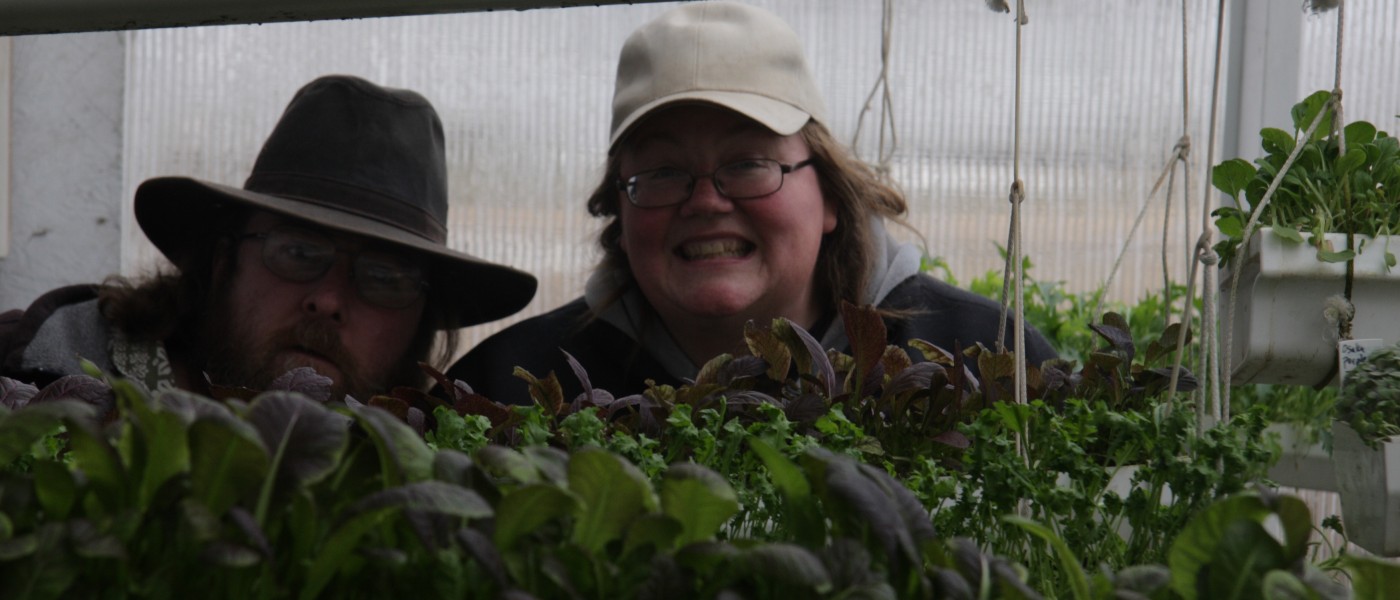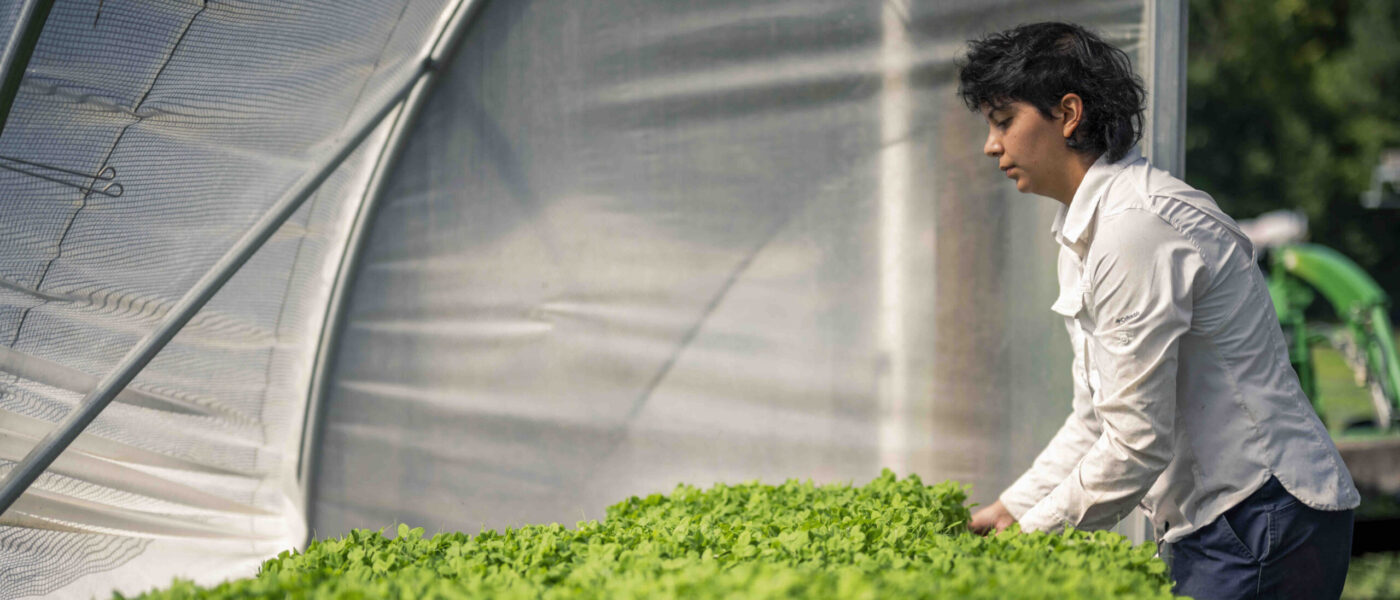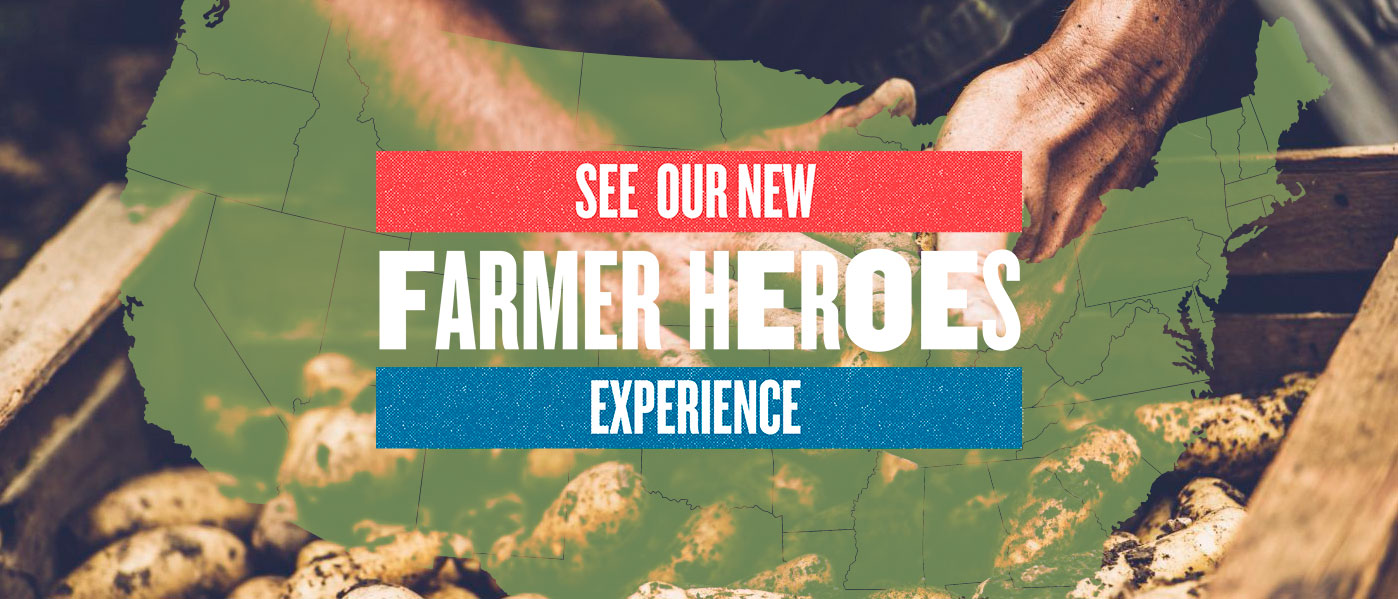Milan, MN
During the brutal, frigid winters, it is difficult for one to imagine that anything green could ever grow in Minnesota, but inside Carol Ford and Chuck Waibel’s Garden Goddess Greenhouse, vegetables are sprouting up even through the thickest snowstorms. Their craving for fresh and local produce combined with ingenuity and knack for gardening have inspired them to create a functional and low impact way to keep good food growing to serve their community all year round.
Carol Ford fell in love with the small town way of life when she moved to Minnesota as a college student to pursue a degree in music. The little shops and rural landscape fit her so well, that she decided to make Milan, Minnesota, her permanent home. After some time, Carol found a local CSA (community-supported agriculture) program near her house, and became a member. She was delighted with the delicious produce she received from the farm each week. Not only did she get the benefit of knowing where her food came from, she also found that participating in the CSA was a great way to make connections and friendships with people in her community.
But all that ended when winter’s first frost rolled in. Surrounding farms harvested the last of their crops and began to prepare for the long, cold season ahead. Like many others who live in rural areas with cooler climates, Carol would have to head to a supermarket to buy her produce for the next few months. For her, this was an unacceptable alternative to the flavorful food she got in the summertime. “I didn’t want to live without that CSA freshness through the winter,” she said, so she set to work exploring different options.
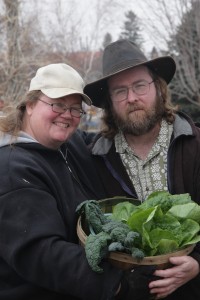 After some research, it seemed like a winter greenhouse might be the answer to her troubles. Carol consulted her husband, Chuck Waibel, who had an inclination toward building and design, to help her come up with a workable model. “We wanted our design to have two things: as small of a carbon footprint as possible, and something that could be made with materials that anyone could purchase at their local hardware store,” Carol said. Chuck and Carol looked at the popular hoophouse designs that are often used for indoor growing, but found they weren’t strong enough to stand up to the intense winds and deep cold of a Minnesota winter. Also, they liked the idea of creating a greenhouse that worked well with the sun’s cycles, like the passive solar models from the 1970s. Using a mixture of old ideas and innovation, they developed Garden Goddess Greenhouse, a twenty-two by sixteen foot passive solar greenhouse that sits just off their garage.
After some research, it seemed like a winter greenhouse might be the answer to her troubles. Carol consulted her husband, Chuck Waibel, who had an inclination toward building and design, to help her come up with a workable model. “We wanted our design to have two things: as small of a carbon footprint as possible, and something that could be made with materials that anyone could purchase at their local hardware store,” Carol said. Chuck and Carol looked at the popular hoophouse designs that are often used for indoor growing, but found they weren’t strong enough to stand up to the intense winds and deep cold of a Minnesota winter. Also, they liked the idea of creating a greenhouse that worked well with the sun’s cycles, like the passive solar models from the 1970s. Using a mixture of old ideas and innovation, they developed Garden Goddess Greenhouse, a twenty-two by sixteen foot passive solar greenhouse that sits just off their garage.
In their model, heat from the sun keeps the greenhouse warm, which dramatically reduces the need for back-up heat. It also has a four-foot deep cinder block foundation and rests on a two foot deep bed of river gravel topped with soil. In that gravel is perforated drainage tile that hooks up to PVC pipe that runs up the length of the interior to connect with black stove pipe that runs across the greenhouse’s peak. The warm temperatures inside the greehouse kick in the thermostats, which in turn set fans in the PVC pipe moving. These fans suck the hot peak air down into the rock bed to heat the structure from the bottom up. This process also warms the soil where plants are growing. Additionally, the passive solar greenhouse design is more rugged than a standard hoophouse, which is commonly made of of metal tubing framework and plastic sheeting. “Our green house withstood a fall storm with hurricane force winds, and deadly winter ice and blizzard storms with no damage” Carol said. “And so far, we have never had a crop failure.”
To create a successful business with their greenhouse idea, Carol and Chuck attended “Farm Beginnings” classes, hosted by Farm Aid partner Land Stewardship Project .“It was great,” Carol said, “it was like a business 101 course in sustainable agriculture.” With their functional greenhouse and new knowledge, Carol and Chuck started a winter CSA for the people in the Milan area that offers weekly deliveries of farm fresh food from October through June They grow hearty vegetables such as bok choi, collard greens, pea shoots and salad greens, and package those up for their customers along with storage crops such as carrots, onions, potatoes and squash that they grew in the summertime. Garden Goddess Greenhouse currently provides vegetables to 18 families in the Milan area.
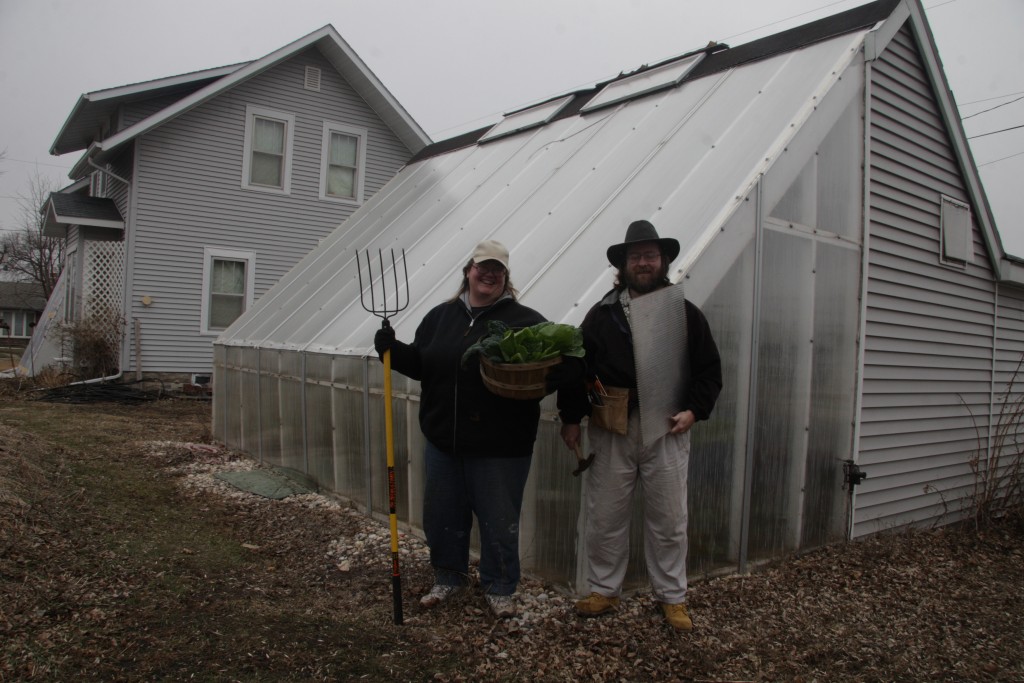 In order to spread the word about their experience with winter growing, Carol and Chuck recently wrote a book called The Northlands Winter Greenhouse Manual. In it, they detail their design specs, skills and philosophies on the importance of having fresh local produce available at all times of the year. So far, Carol has had an exciting response to the book. She has seen similar passive solar greenhouses popping up in cold climates all over the country. There is even a charter school in Grand Marais, Minnesota that is using the design to teach children the importance of growing fresh food.
In order to spread the word about their experience with winter growing, Carol and Chuck recently wrote a book called The Northlands Winter Greenhouse Manual. In it, they detail their design specs, skills and philosophies on the importance of having fresh local produce available at all times of the year. So far, Carol has had an exciting response to the book. She has seen similar passive solar greenhouses popping up in cold climates all over the country. There is even a charter school in Grand Marais, Minnesota that is using the design to teach children the importance of growing fresh food.
Carol and Chuck are currently working on plans to quadruple the size of their greenhouse and to eventually work as full-time farmers. Carol Ford’s main philosophy: “Fresh produce doesn’t have to end with the first frost!” With a small amount of space and some supplies from the local hardware store, she and her husband have shown that anyone can grow fresh winter vegetables, no matter where they live.
Related Links
How can you get food from family farmers during the winter? Read our Ask Farm Aid from January 2011 to find out.
